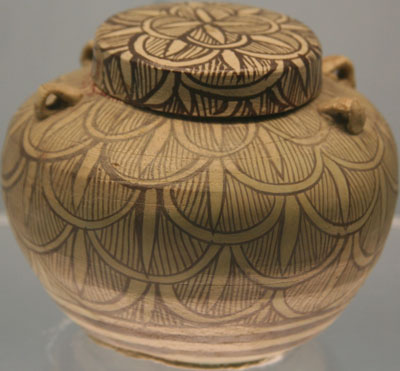Decorative Designs in Chinese Art 中国文物的纹饰
Porcelain 瓷器 Song Dynasty 宋
Click on any word to see more details.
Song Dynasty 宋
The Song Dynasty (960—1279) was a prosperous period in China during which cities flourished, many inventions where made, such as gunpowder and movable type printing, and porcelain became more widespread. There were many developments in form, glaze techniques, and artistic content. Of the many porcelain factories in China at this time, and the best know were the Five Famous Kilns of the Song Dynasty 宋代五大名窑, which were: Ru Kiln 汝窑 in present day Linru, Henan; Guan Kiln 官窑; Ge Kiln 哥窑; Jun Kiln 钧窑 in present day Yuxian County, Henan; and Ding Kiln 定窑 in present day Quyuan County, Hebei.
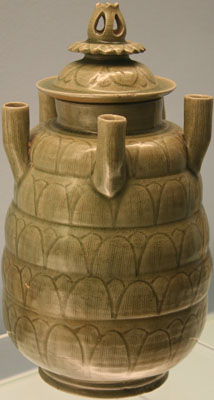
Longquan Kiln 龙泉窑 located in present day Longquan, Zhejiang and founded in the Five Dynasties period, is one of the most famous porcelain kilns in China, The kiln is known for the powder-green and plum-green colors obtained by applying multiple layers of glaze. The jar below was produced at Longquan Kiln. Longquan kiln was well known for producing soft colors and forms in a subtle variety of greens and blues. A special alkaline-calcarous glaze was used rather than the standard lime glaze to allow thicker and more even application.
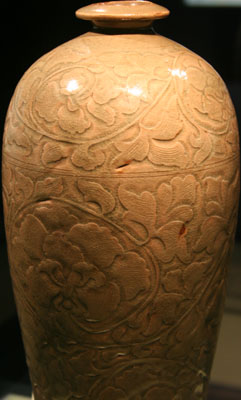
Yaozhou Kiln 耀州窑 was established in Shaanxi in the Tang. It produced black, white, and celadon porcelain. A meiping 梅瓶, such as the one shown above from Yaozhou, is a kind of flower vase with a narrow mouth.
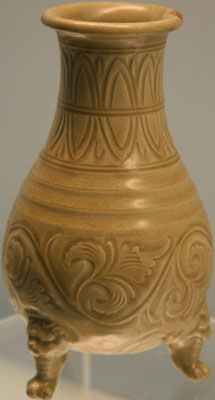
Natural themes, especially flowers, in porcelain were popular during the Song, such as the lotus petal, peony, lotus bouquet items on this page show.

The lotus bouquet design 把莲纹, shown above, is a traditional design that combines lotus flowers, stem, and leaves.
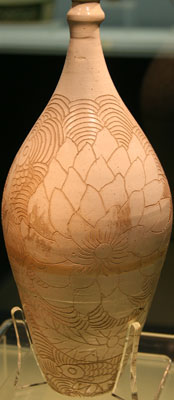
The Jizhou Kiln 吉州窑 was located in Jiangnan (south of the Yangtze) area. The kiln was well known for producing porcelain with a folk art flavor. The covered jar below is from Jizhou Kiln.
Chinese
Pinyin English
